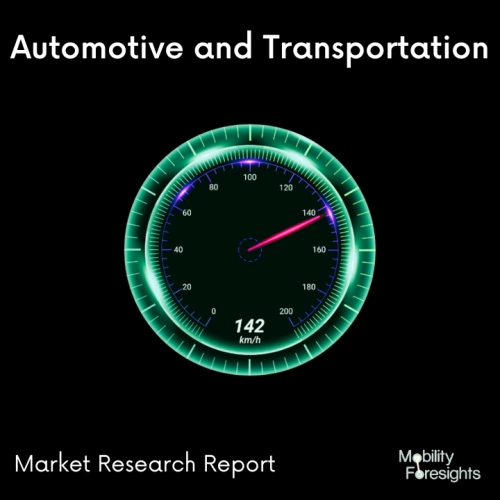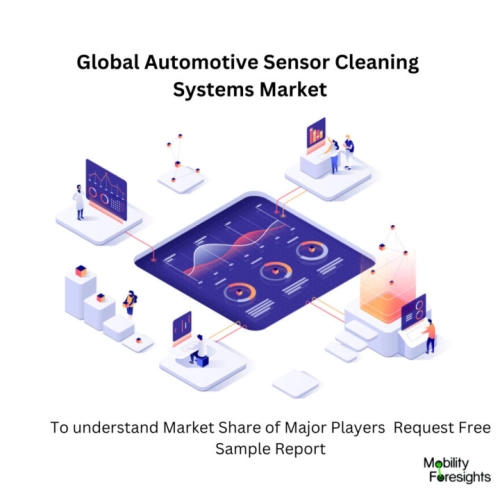
- Get in Touch with Us

Last Updated: Apr 25, 2025 | Study Period: 2024-2030
A comprehensive system that cleans the lenses of the autonomous cars' and ADAS' sensors of rain, snow, debris, and avoids dirt buildup. Integration of sensors, radars, and lidars is essential for reducing computational reaction time, increasing data accuracy, and creating automated cars.
In order to continue taking excellent pictures, it's crucial to take good care of your sensor. The accumulation of dust on your sensor might cause your photographs to seem splotchy if you don't clean it. If you often switch lenses with a mirrorless camera, your sensor will become dirtier than it would be with a DSLR camera.

TheGlobal automotive sensor cleaning systems marketaccounted for $XX Billion in 2023 and is anticipated to reach $XX Billion by 2030, registering a CAGR of XX% from 2024 to 2030.
The need for effective traffic safety measures, such as improved road infrastructure and cutting-edge sensor cleaning systems, will grow as autonomous vehicles (AV) become more common.Sensor systems are used in smart automobiles to gather outside information that initiates automated and autonomous operations.
However, any sensor that is directed outside is susceptible to external factors including dirt, mud, insects, and other road debris. Therefore, maintaining clean sensors before the vehicle moves is insufficient. AVs must maintain a pristine environment while moving since they depend on a variety of sensors to function.
The intention is to avoid circumstances where a sensor could be covered up during a turn or other manoeuvre, hence avoiding accidents. Technologies for cleaning sensors play a critical part in this. A car's sensor count is rising quickly, in part due to increasing safety standards and the deployment of autonomous technology across all vehicle classes.
As cars become more automated, the significance of clean sensors will only grow. The objective is to ensure both individual and vehicle safety while paving the road for future transportation. Players in the market might provide four different kinds of sensor cleaning systems.
These include anti-fogging and ultrasonic cleaning technology as well as wiper and jet technology, protective materials, passive and active aerodynamics, and experimental advanced technologies.
| Sl no | Topic |
| 1 | Market Segmentation |
| 2 | Scope of the report |
| 3 | Abbreviations |
| 4 | Research Methodology |
| 5 | Executive Summary |
| 6 | Introduction |
| 7 | Insights from Industry stakeholders |
| 8 | Cost breakdown of Product by sub-components and average profit margin |
| 9 | Disruptive innovation in the Industry |
| 10 | Technology trends in the Industry |
| 11 | Consumer trends in the industry |
| 12 | Recent Production Milestones |
| 13 | Component Manufacturing in US, EU and China |
| 14 | COVID-19 impact on overall market |
| 15 | COVID-19 impact on Production of components |
| 16 | COVID-19 impact on Point of sale |
| 17 | Market Segmentation, Dynamics and Forecast by Geography, 2024-2030 |
| 18 | Market Segmentation, Dynamics and Forecast by Product Type, 2024-2030 |
| 19 | Market Segmentation, Dynamics and Forecast by Application, 2024-2030 |
| 20 | Market Segmentation, Dynamics and Forecast by End use, 2024-2030 |
| 21 | Product installation rate by OEM, 2023 |
| 22 | Incline/Decline in Average B-2-B selling price in past 5 years |
| 23 | Competition from substitute products |
| 24 | Gross margin and average profitability of suppliers |
| 25 | New product development in past 12 months |
| 26 | M&A in past 12 months |
| 27 | Growth strategy of leading players |
| 28 | Market share of vendors, 2023 |
| 29 | Company Profiles |
| 30 | Unmet needs and opportunity for new suppliers |
| 31 | Conclusion |
| 32 | Appendix |